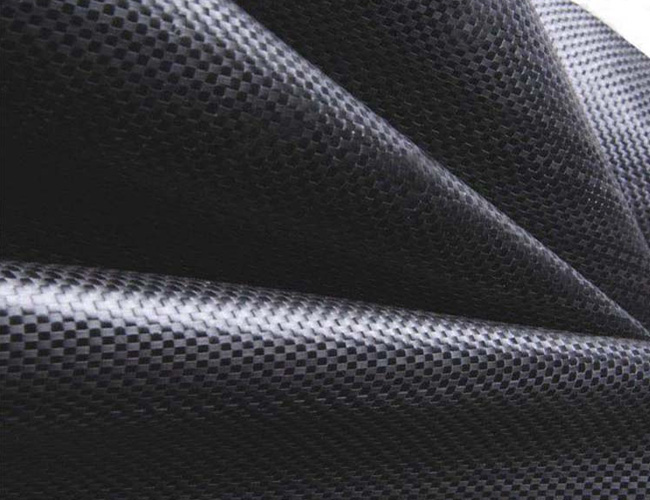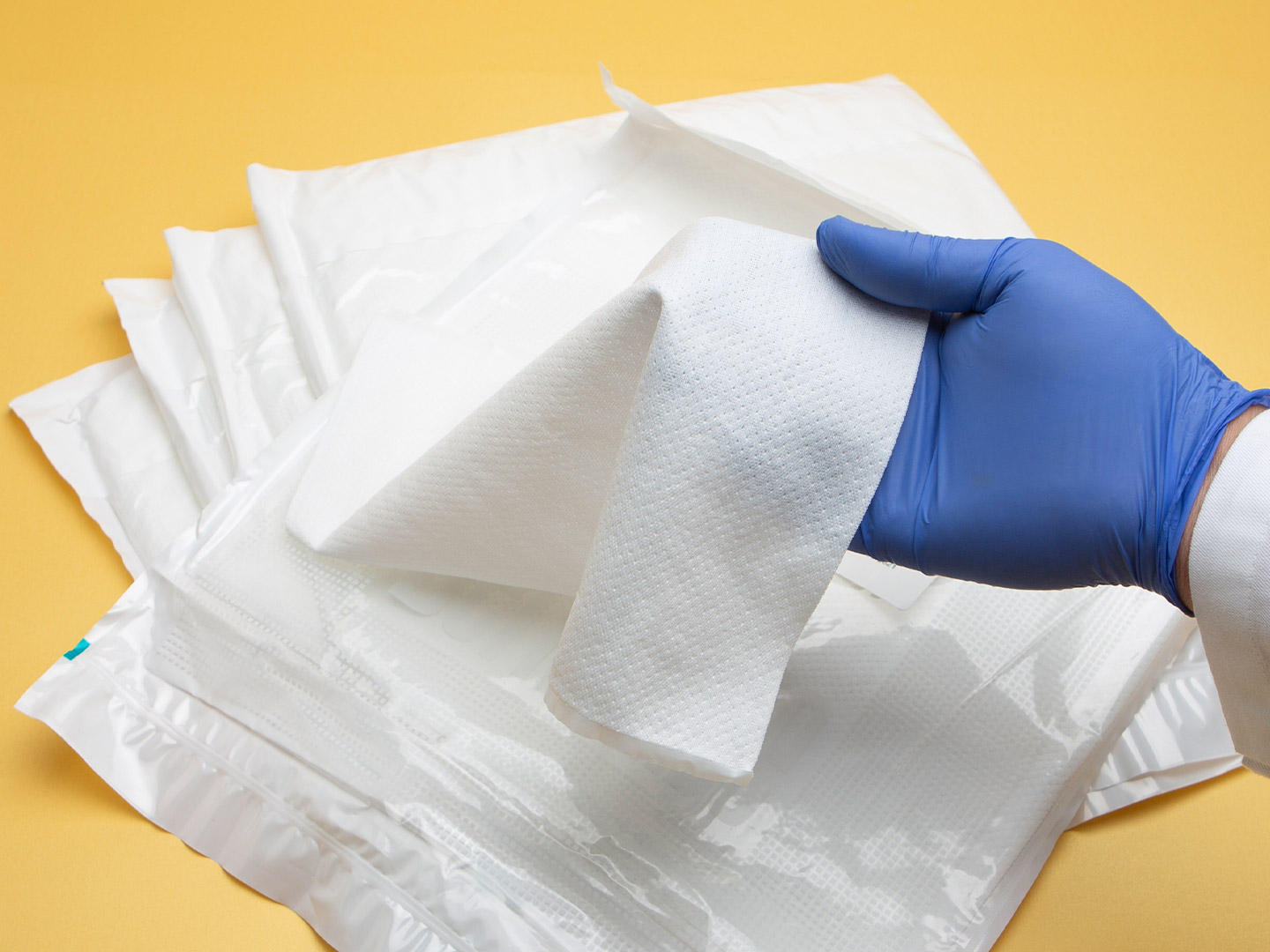Woven geotextiles and non-woven geotextiles are two different production processes. Woven geotextiles are at least two groups of yarns interwoven in the warp and weft direction. And nonwoven geotextiles are interwoven directly through a process such as needling. Because of the difference in production processes. Two geotextiles in the process and performance also have certain differences. Each has its own advantages and disadvantages, not necessarily which is better. The choice is mainly based on engineering The choice is mainly based on the project requirements for selection. Here's a look at the difference between spun and non-woven geotextiles, what are they?

Woven geotextile is a cloth-like product that is woven into a flat structure for geotechnical engineering after processing synthetic polymer raw materials into silk, yarn, or tape. And can also be used as woven landscape fabric, also known as satin modeling geotextile. It is the earliest geotextile product. It is often woven with two groups of mutually perpendicular filaments, namely warp and weft filaments. Depending on the type of filaments (monofilament, multifilament, and mixed filaments) and the weaving method (plain, twill, and satin), as well as the material of the filaments (polypropylene ages faster, polyester and polyethylene slower, etc.). The woven geotextiles can have different properties to suit the requirements of strength, warp and weft strength ratio, coefficient of friction, equal pore size and durability, and other indicators proposed by the project to the fabric.
Most woven geotextiles are made of monofilaments (round or flat), and most woven geotextiles are made of flat filaments. Woven geotextiles woven from a combination of round and flat filaments have high permeability. And when high-strength geotextiles are required, multifilaments are often used.
Woven geotextile is a kind of geosynthetic material with high dosage, wide use, easy construction, and low price. Its most common function is as a wrapping material that is sewn into woven bags, filled with sand, stone, and soil materials. Made of different sizes of soil pillows or bags as filler or ballast, and used for flood control, and rescue, or temporary support projects. Some areas in China will also have spun geotextiles made of geotechnical mold bags, filled with concrete as slope protection. High-quality woven fabric can also play a reinforcing role in some reinforcement projects. Besides, it also has a certain reinforcement and isolation function. The surface coated with plastic woven fabric can play a temporary impermeability. There is also a kind of warp knit geotextile in the woven geotextile. It is tied up with finer warp knitting threads at the intersection of warp and weft threads to form a firm knot, so that it has high tensile strength and a small extension, and is used in parts with special needs.

Nonwoven geotextile is a type of nonwoven geotextile. Its characteristic is that it does not need to be woven. And we often say that non-woven geotextiles are mainly made by repeated needling processes. So some non-woven geotextiles will also be called needled geotextiles. And classification they are mainly divided into two kinds, namely filament needled geotextiles and staple fiber needled geotextiles.
Since nonwoven geotextiles are made by repeated needling of filaments or short fibers. They have many characteristics that other geotextiles do not have. Such as the pore structure belonging to the three-dimensional state, which also determines the permeability of nonwoven geotextiles is very good. So it will also be called permeable geotextiles. Different geotextiles have a different range of pore sizes, so the permeability is also strong and weak.
Due to the differences in production processes, the impact on product performance varies.
Nonwoven geotextiles are made by interweaving filaments and staple fibers with the help of mechanical equipment and other production processes such as needling.
Woven geotextiles are woven fabrics, produced by interweaving at least two groups of yarns in the warp and weft direction.
Because of their high circulation rate. Nonwoven geotextiles are permeable. And are also called geotextile drainage fabrics or geotextile filter fabrics
Spun geotextiles are semi-impermeable and have a low circulation rate.
Nonwoven geotextiles have good deformation though. And are well suited for filtration, separation, and drainage applications to serve.
Woven geotextiles have a considerable tensile strength effect in the horizontal direction, and have more practical characteristics in the reinforcement effect. Playing a role in preventing erosion control.
Nonwoven geotextiles are usually measured by weight.
Woven geotextiles have a higher load-bearing capacity and tensile strength. These are commonly used in road construction.
That is the use of geotextiles to have different physical properties (particle size, distribution, consistency, density, etc.) of the construction materials for isolation. So that the two kinds of materials do not lose, not mixed, to maintain the structure and function of the material. So the load-bearing capacity of the structure is strengthened.
When water flows from the fine material soil layer into the coarse material soil layer. Use the needle-punch geotextile good permeability and water permeability to make the water flow through, while effectively intercepting soil particles, fine sand, small stones, etc... To maintain the stability of soil and water engineering.
Needle-punch geotextile is a good water-conducting material. It can form a drainage channel inside the soil body and drain the excess liquid and gas out of the soil structure.
Needle-punched geotextiles are used to enhance the tensile strength and deformation resistance of the soil body. And increase the stability of the building structure to improve the quality of the soil body.
Effectively diffuse, transfer or decompose the concentrated stress to prevent the figure body from being damaged by external forces.
Needle-punched geotextile works with other materials to form an impermeable compartment in the soil layer.
That can stabilize and limit the project's long time use to shift. And can make the local stress act on the soil transfer or distribution to a larger area.
Geotextile fabric is used to separate different geotechnical structure materials to form a stable sub-interface. And play their respective characteristics and overall role according to the requirements.
Geotextile and geomembrane are used together in two different pressure materials. That can play the role of tension and diaphragm.
The function of placing the geotextile across a flowing liquid channel with suspended particles to stop mud particles. And allow the liquid to pass through.
Placing geotextiles on slopes can stop the loss of mud particles due to rainfall or planting turf.
It is widely used in water conservancy, electric power, harbor, highway, railroad construction, and other projects.
High strength, it can maintain enough strength and elongation in dry and wet conditions.
Corrosion resistance, it can resist corrosion for a long time in different acidity and alkalinity of soil and water.
Good water permeability, there are gaps between the fibers, so it has good water permeability.
Good anti-microbial property, it is not damaged by microorganisms and insects.
Convenient construction;
Complete specifications.
Compared with non-woven geotextiles, the main disadvantage of spun geotextiles is that they do not have the function of filtration (i.e. plane drainage). And they are relatively costly.
Above is the introduction of woven vs non-woven geotextile. For more information about non-woven fabrics, you can follow us at G&F. We are the leading Chinese manufacturer of non-woven fabrics, non-woven interlinings, spun interlinings, and non-woven interlinings in the industry. CONTACT: [email protected]
All Rights Reserved: https://www.groupgf.com/info-detail/woven-vs-non-woven-geotextile
Copyright Notice: This is an original (translated) article from G&F Group Inc., please indicate the source from G&F Group Inc.. If there is any infringement, please contact us first.
 Nonwovens in daily life ----- automotive
Nonwovens in daily life ----- automotive
 What is SAP – superabsorbent polymers
What is SAP – superabsorbent polymers
 The Future of Global Nonwoven Wipes to 2029
The Future of Global Nonwoven Wipes to 2029
 C.K. Wong, Nonwovens Industry Pioneer, Passes Away in Hong Kong
C.K. Wong, Nonwovens Industry Pioneer, Passes Away in Hong Kong